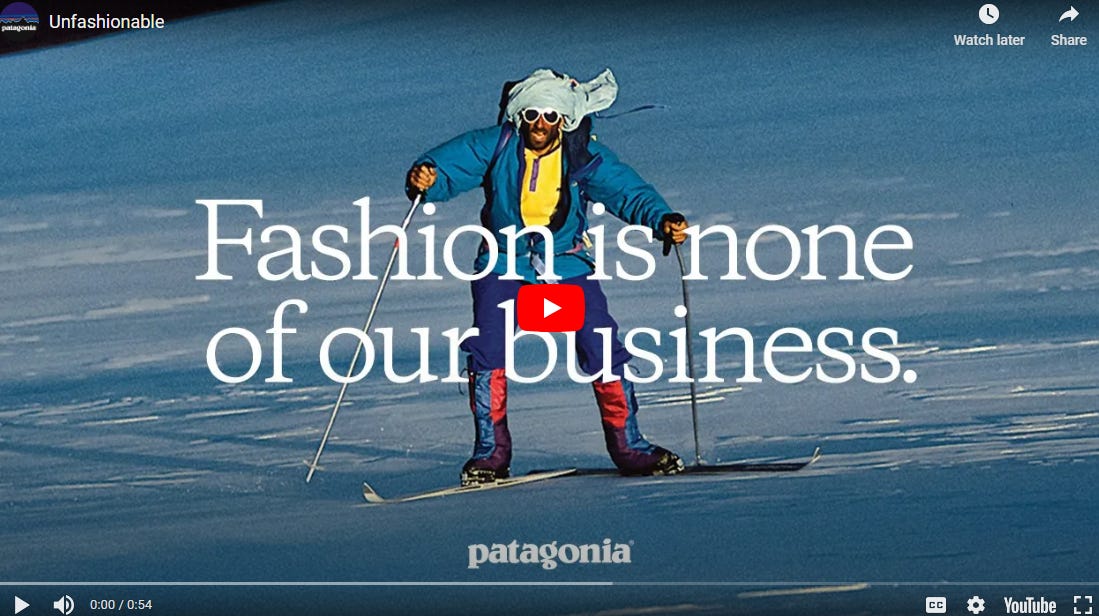Imagine a world where we derive most of our clothing from new sustainable materials and practices—a world where sustainability, technological development, capital allocation, regulations, and financial returns are aligned, fueling continuous innovation throughout the fashion industry.
If you ask most to visualize the Atacama Desert, you will imagine something like this:
Image: Bailey Ball
However, the sad reality is that some areas actually resemble what you see below.
Image: National Geographic
Multiply that hundreds of times with similar places throughout the Global South.
Don’t worry—this isn’t another rant about sustainability. Instead, its an open question on why technology companies aren’t driving more transformative change across the fashion industry.
I know we are far from achieving the ideal world I described above, but I like to think that we are at least groping our way in that direction.
There are positive signs, like estimates, that the global market share for sustainable clothing will increase to 7.5% by 2026, up from 6.1% in 2022, as more consumers change their behavior.
So, it’s no surprise that I felt my heart sink when I heard that Renewcel, a Swedish company known for its groundbreaking textile recycling technology, declared bankruptcy.
Renewcel developed Circulose, a recycled fiber crafted from discarded cotton textiles. A significant step towards circularity and addressing the environmental impact of cotton, one of the most damaging fabrics in fashion.
Image: The Times
Long story short, the company faltered primarily due to a lack of traction—insufficient clients, sales, and retention—which made securing capital difficult despite backing from major brands like H&M, Zara, and Tommy Hilfiger.
While doing some digging, I saw that H&M, Renewcell’s main backer, recently faced significant backlash over “misleading environmental claims.”
So why would H&M decide to pull the plug on this project? In my eyes, the answer may be related to either: UNCOMPETITIVE prices or NO love for Renewcell fabrics.
This matters because most H&M clients seek affordability and agility when shopping for new designs. But is this realistically sustainable in the long term?
Hundreds of startups fail globally every day. Over the years, I've understood that this is how it should be. Only the fittest and best-managed survive. Those with a clear path to financial sustainability continue to raise funds and grow.
Perhaps Renewcell didn't fit this mold; as it remains a private company, we may never know the whole story.
On the other hand, I know that deeply influential and conscious companies generate substantial returns while leaving a better imprint on the planet, like Patagonia. Its message is simple yet POWERFUL: "We're in business to save our own planet."
Access Complete Video
And, yes, I have hope for the future, mainly because of the rise of newer companies like Rent the Runway, Circ, By Rotation, Luxe Collective, SuperCircle, and Nopli, which drive transformational change. Change in the way we shop and change in the way we value things.
What really drove me to write this piece were some of the questions that kept popping like crazy in my head after reading about Renewcel’s bankruptcy. I felt the adrenaline running through my veins as I couldn’t figure out what truly mattered:
Are fast-fashion companies the only culprits in this environmental mess?
Why is there little quantifiable data about the luxury industry's environmental impact?
And what power do we, as consumers, indeed hold?
I didn't really want to focus solely on corporate actions. As consumers, we play a critical role – every time we decide what we buy. That got me asking:
If most of us SAY and BELIEVE that we need more companies like Renewcell, why do they keep failing? Why hasn’t the fashion industry evolved much in this regard? I keep coming back to the realization that:
Whether we like it or not, most of us shop with our emotions and not always with our values.
OK, hear me out.
Yes, consumers have become more conscious and verbal than ever in pushing brands towards more sustainable practices. But there’s a lot of dissonance in our lives. We say we want to do one thing, but we do another. We think blue, but do red. All the time.
"If tensions, conflicts, and irresolvable dilemmas are the spice of every culture, a human who belongs to any particular culture must hold contradictory beliefs and be driven by incompatible values. It's such an essential feature of any culture that it even has a name: cognitive dissonance." Yuval Noah Harari
That's why many of us find ourselves in a state of mental confrontation, grappling with contradictory beliefs, attitudes, and values.
It doesn’t help that we’re constantly bombarded by marketing, spend endless hours on social media, and are influenced by the latest trends that trigger our innate reaction to belonging, amongst other things.
Ironically, our actions often fail to align with the principles we hold dear, as we are fundamentally emotional rather than rational beings.
As someone who likes to put theories into practice, I wanted to test this theory with Gen Z. Why? Because it’s the generation most verbally pushing society towards dealing with climate change and adopting more sustainable practices - thank goodness!
It turns out their shopping behavior is pretty contradictory. Not that I, as a millennial, claim any higher ground. It’s not a Gen Z thing. It’s a human thing.
Yuval Noah Harari’s book Sapiens reminds us that this isn't inherently bad; it's just human nature.
But let’s face it: we also need more awareness and transparency from companies. Because, let’s face it, they add to our confusion.
For me, Ronny Chieng hilariously summarizes one of the most coveted things in our society: immediacy. Although Amazon is not a fashion company inherently (16% of its revenue in 2022 came from it), we see how we all continue to contribute to the problem, consciously or unconsciously, actively.
If you want to laugh, here’s the link for the complete video.
So, I wanted to leave you some of my unanswered questions:
How will consumers and companies align to decrease their environmental impact if consumption is estimated to continue growing?
Are we aware that petrochemical demand continues to grow steadily as we increase our demand for plastic, especially supported by the clothing industry?
Is our capacity to hold incompatible values and beliefs what allows new cultures to form while allowing older ones to persist?
How can we really educate people to understand the TRUE value of things and their real COSTS?
We’ve seen legislation changes, but why is there no consensus evidence we need them?
As consumers and company builders, we need to do more of what we preach. We need more alignment of “mind, tongue, and heart.”
I finish this piece with hope, as I am an optimist. I look at the world and the immense technological revolution we live in and see us inexorably moving forward.
So, how do we, as consumers, DEMAND more of this?
Fantastic technologies exist, including digital technologies for sustainable design and production, new materials, recycling technologies, supply chain transparency and traceability, consumer-facing tech (AR/VR), and emissions reduction.
“Crucially, what’s needed is a deep shift in the current business model — and that will take time, collaboration, and pressure across the industry.” Izzie Ramirez, Vox
Even if corporations and investors do their part to delve into true transformation, we must give visibility to companies doing great things. So, as consumers, we have the power to reward great companies.
Thank you for taking the time to read Unbound! I can't wait to hear your thoughts and learn from your experience. Feel free to reach out to me anytime!
🐼 Ask your questions & leave your feedback here
🐾 Follow me on LinkedIn: Suad Fakih-Name & on Twitter: Suad Fakih
👾 Tell me what kind of community would you like me to build for Unbound here












Love the questions you explore here and out of the "unanswered questions you posed" this was the one I hadn't really thought about but now I want to know more: "Are we aware that petrochemical demand continues to grow steadily as we increase our demand for plastic, especially supported by the clothing industry?"